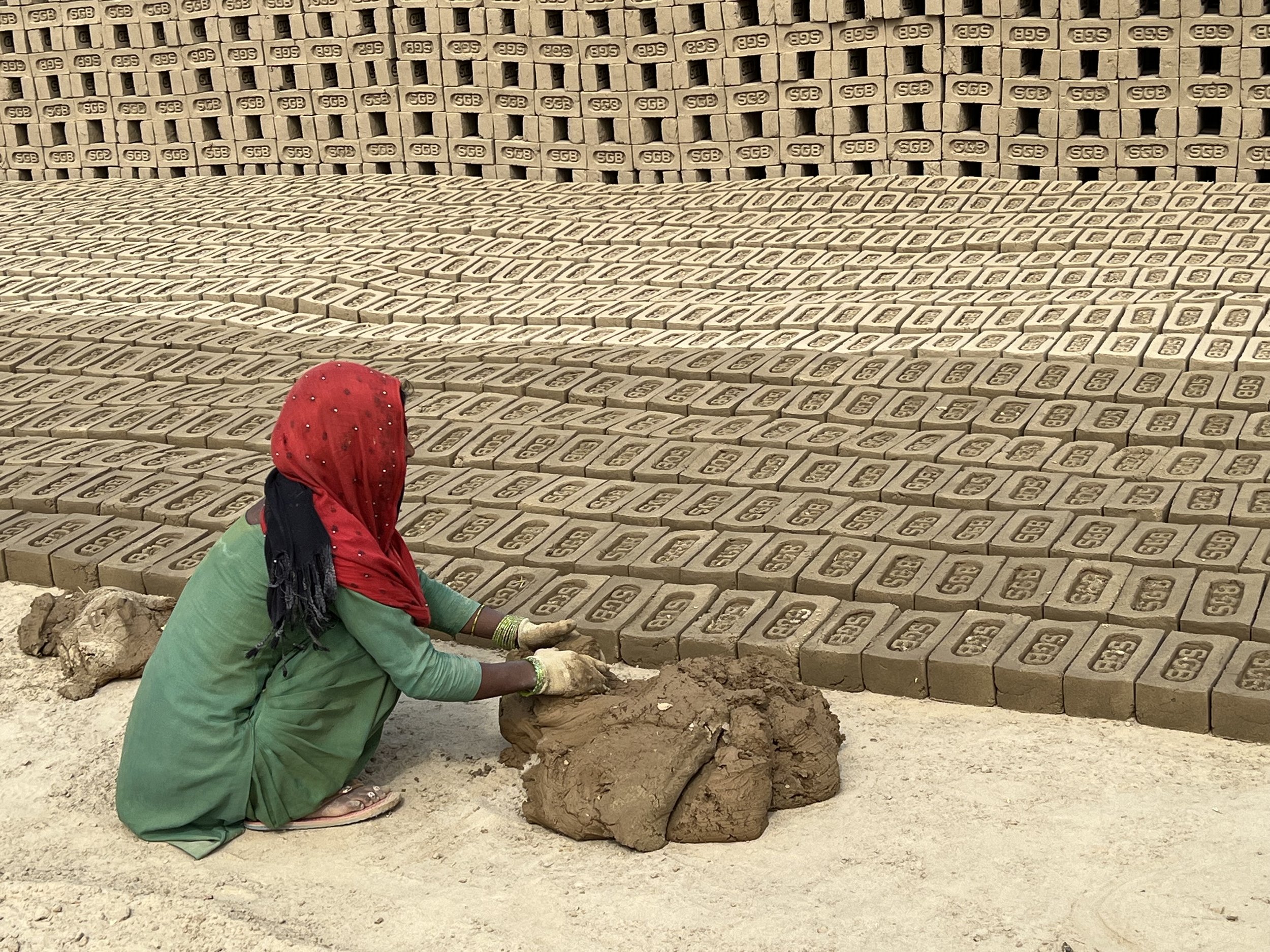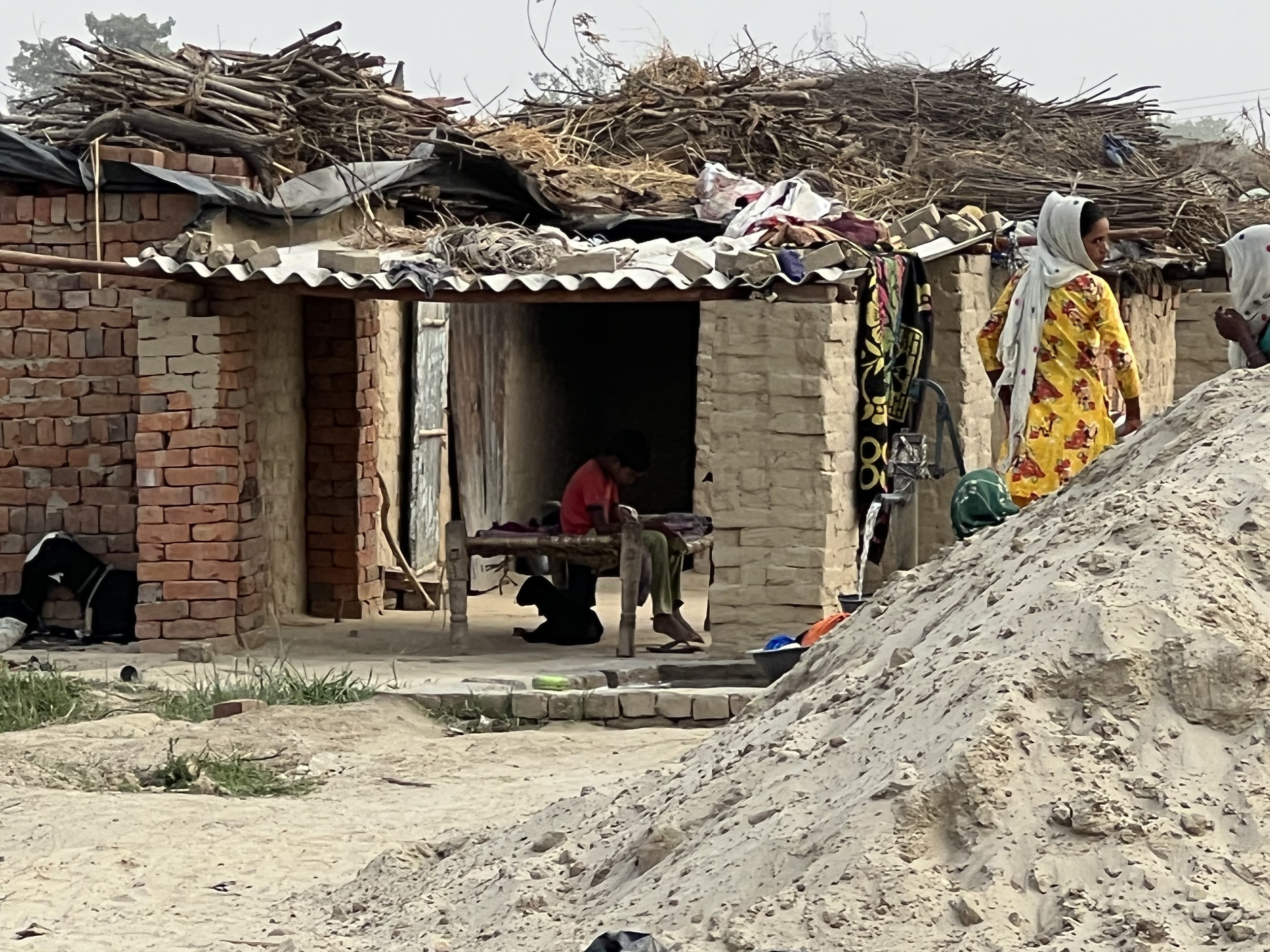In a Nowhere Land: Brickmakers of Uttar Pradesh
Brickmaking is a family activity
We drove in Western Uttar Pradesh at 45 degrees Celcius (113 degree Fahrenheit) to undertake field practice for interviewers and decided to stop at a brickmaking facility. I had read about brickmakers but had little familiarity with their operations. It was amazing to see row after row of neatly made bricks, some dry, others still wet and fresh from the mold, all waiting to be taken to a nearby kiln to be fired.
Stepping down from our air-conditioned vehicles was like entering an inferno. Without any shade and dust from the clay flying around us, 45 degrees felt much hotter. The workers and their families lived on-site in makeshift shelters made of brick and aluminum sheets, creating an oven-like shelter. All around us, men and women were busily slapping clay into a mold and turning it over to shape the bricks. Half-clad children played nearby.
In prosperous Western UP, it is difficult to find workers willing to undertake this hard manual labour, and the workers on the site were brought over from Bihar by the owner. They lived and worked at the site for about eight months a year and went back home during the monsoon when outdoor work stopped.
Brick kilns employ families rather than individuals and pay by the amount produced. This is backbreaking work involving carrying clay headloads and squatting to shape bricks. The workers in the kiln I visited said that they could typically produce about 1000-1200 bricks in a day, and for every 1000 bricks made, they earn Rs. 500 ($7). During the COVID-19 lockdown, the kiln owner closed the gates, and the workers continued to live and work at the facility. They were provided weekly rations by the kiln owner at cost. They considered themselves fortunate that they still had work when other migrant workers had to go back home.
Most brick workers migrate with children, and women take care of children and household chores in between shaping bricks. Children in the kiln I visited were wandering around in minimal clothes, and I worried about their getting a heat stroke.
When I asked them whether the children attended school, the answer was, “Some government workers came and collected the names, but no one has come to call children to school.” It was then that I realised the consequences of their living arrangements. The kiln is located outside the village boundaries and does not fall under any panchayat. Consequently, no school considers children in this locality part of their constituency.
Most of the brick workers are locally concentrated in regions around Delhi-NCR which extend up to Gujarat through the eastern part of Rajasthan, Uttar Pradesh, coastal and inland Maharashtra; Gangetic West Bengal; Odisha, and parts of Andhra Pradesh and Tamil Nadu (Roy and Kunduri, 2018). Using data from the National Sample Survey, Roy and Kunduri estimate that about 2.11 million brick workers in India, most of them in rural areas. In contrast, ILO estimates that about 10 million workers are employed in brickmaking in India. This discrepancy may well be due to the fact that these kilns fall outside sampling frames.
Looking at migrant workers from a brick worker’s perspective throws up interesting challenges. It is not clear how these workers are enumerated in any statistics. Data collection in India is firmly rooted in location. The rural population is enumerated based on villages identified by Census; the urban population is typically enumerated based on either Census urban block maps or National Sample Survey Urban Frame Survey. Do these kilns or other industries where workers have temporary shelters fall within either urban or rural enumeration schemes? If not, are they ever counted?
Moreover, life in India is governed by what Shankkar Aiyar termed “address addiction.” It is almost as if I have an address; therefore, I am. Without an address, particularly proof of an address, it isn't easy to open bank accounts, obtain social services and get a ration card. While attempts are being made to ensure portability of services, particularly the One Nation, One Ration Card scheme whereby highly subsidised food grains are made available, its implementation is challenged by technical failure of biometric authentication and lack of awareness on the part of beneficiaries.
However, access to food subsidies is only part of the challenges migrant workers living in this no man’s land face. Indian service delivery systems have extensively focused on access points provided by rural health workers and Anganwadi workers (early child development service providers) to access health services. State regulation and processes govern school admission and subsidies, and most states require a domicile certificate for admission under the Right to Education Act (RTE), a challenge for interstate migrants.
Looking at the world through the eyes of these interstate migrants without explicit claims to the temporary shelters they occupied for months on end, it is clear that access to government services needs to be restructured. If a child is physically present in any given location, isn’t her existence a better proof of her claims to that space than any paper listing a house number?

